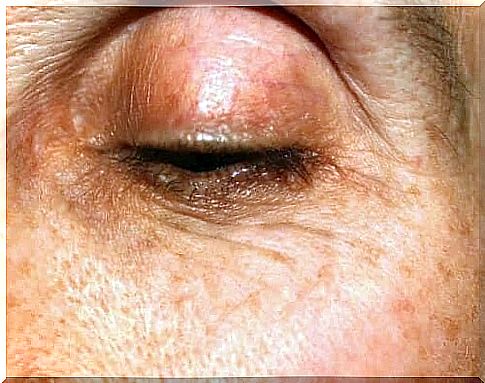Dysfunctions Of The Meibomian Glands: Characteristics

Dysfunctions of the meibomian glands, also known as meibomianitis, are inflammation of the glands located in the upper and lower eyelids. These glands release oils into the area. The condition occurs when the secretions become denser than normal.
Meibomian oils are important for eye health. The eyes would become dry and irritated if the production of these oils stopped. Excessive thickening of these oils leads to dysfunction.
This disease does not cause lasting damage in most cases. Sometimes, however, it can lead to corneal ulcers or more serious problems.
Dysfunctions of the meibomian glands: causes
First, inflammation of the meibomian glands occurs when they release more oils than normal.
The glands produce oils that are slowly absorbed by the tear film – the thin layer of moisture that covers the eyes. The film is composed mostly of water, which would evaporate if there were no oils.
Certain conditions, such as rosacea, acne or allergies, as well as hormonal changes during adolescence, can make the oils thicker or denser. These no longer spread in the tear film, but accumulate at the edges of the eyelids.
In addition, these accumulations are a nutrient for bacteria in that area of the skin. Dysfunction occurs when these microorganisms multiply excessively. Inflammation often coincides with blepharitis, which leads to the accumulation of a type of dandruff at the base of the eyelashes.
Dysfunctions of the meibomian glands: symptoms
In the latter case, the meibomian glands may be blocked and there may be less oil production. Symptoms may be mild or may vary in severity.
Diagnostic
Meibomian gland dysfunction can be detected on routine eye examination. The doctor will explore the front of the eyeball, with a special focus on the eyelids. In addition, it can use strong light to detect possible blockage of the meibomian glands.
Occasionally, the doctor will take a sample of fluid or crust from the eyelids. He will then send it to the laboratory for analysis so that it can detect the presence of bacteria. This aims to collect several elements for the diagnosis and prescription of treatment.
Treatment

avert
There is no specific way to prevent meibomian gland dysfunction. However, an important measure is to treat rosacea or acne.
It is also important to avoid certain foods, such as chocolate, as these can increase symptoms. The best thing is to have proper eye hygiene. This includes an ophthalmic bath, as well as taking breaks and eye exercises.
The symptoms of meibomian gland dysfunction are usually quite uncomfortable. However, it rarely causes major difficulties. In other words, it does not threaten vision, but it can become chronic and affect the quality of life.
In addition, the available treatments do not prove to be effective immediately. We must allow time to do its job. Consult a doctor if the treatment is not effective, especially if urticaria begins to appear.









